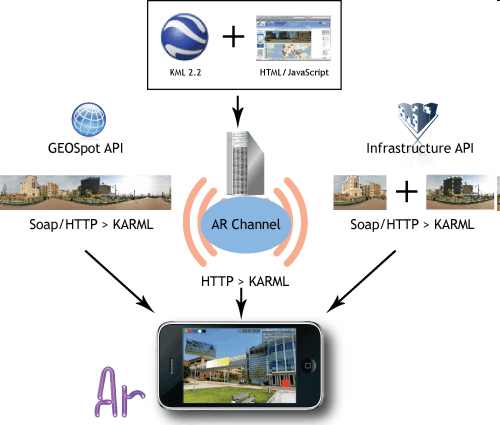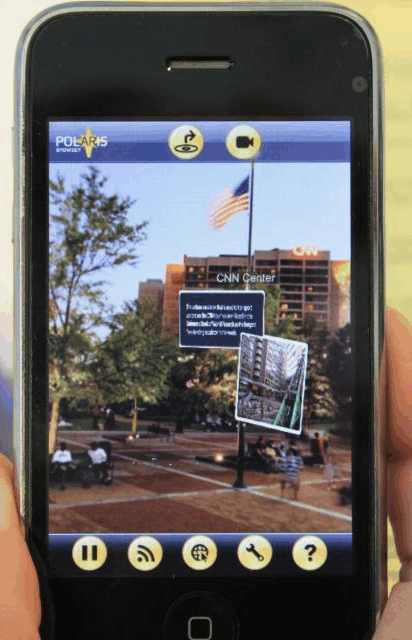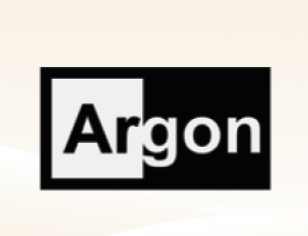| A standard for Augmented Reality? |
| Written by Harry Fairhead | |||
| Monday, 07 March 2011 | |||
|
Augmented Reality holds out a lot of promise but until now has been hampered by the lack of an accepted standard. Is this about to change? Augmented Reality (AR) is one of the areas that promises so much but so far at least hasn't really delivered. If you think that this is a wrong assessment it is probably because you haven't considered the range of potential applications for AR. It could for example change the way instruction manuals are created - instead of having to follow written instructions or even view a video of how the device is used you could view it with AR labels and indicators of what things do.
The big problem is that there is no standard way of creating AR applications and this means that we have to invent the wheel each time we need a new bicycle. There are proprietary technologies - such as Layer - but there are no open standards. Now a team at Georgia Tech plans an enhancement of web protocols and standards to encompass AR, basically shifting the focus to the browser as the main way of viewing AR video.
The system is based on technology grouped under the title KML/HTML Augmented Reality Mobile Architecture or KHARMA for short. They have implemented an AR browser for the iPhone called Argon that acts as a reference client for the technology. It uses a range of geolocation technologies and the standard KML markup is used to place graphics on say Google Earth, for example, to place graphics on location-specific video. The KML is extended to become KARML to allow for COLLADA 3D models and general HTML content. The proposed infrastructure makes use of three layers of servers - channel servers which provide the KARML data stream, Infrastructure servers which provide information on the exact nature of the buildings and surroundings and GEoSpot servers which are location "hotspots" which enable the user to gain a precise position.
Argon in action The idea is to allow developers to try out Argon and see if they can create a killer application that makes the standard take off. However, the emphasis of KHARMA is on strictly geolocation based AR and this might not be where the killer application is hiding. For example, if you want to create an AR application that shows a beginner how to play chess then location information is best provided by a sensor like Kinect rather than geolocation. In fact the range of Kinect based AR applications are more likely to be where the killer AR app is indeed hiding and KHARMA or some other standard really needs to be extended to include other sensors and much higher precision location within a geolocated cell - this we will have to wait for.
More Informationhttps://research.cc.gatech.edu/kharma/content/kharma-framework
Do you want to comment on this story? E-mail the editor@i-programmer.info
|
|||
| Last Updated ( Monday, 07 March 2011 ) |



